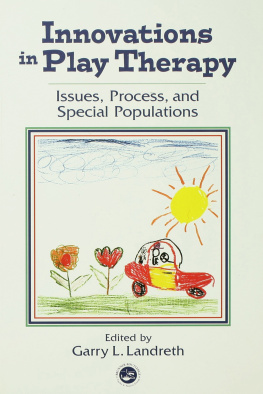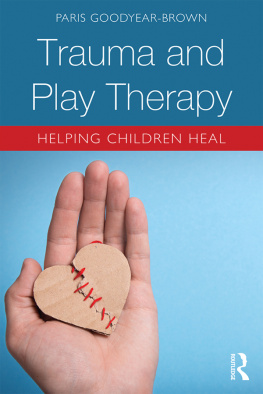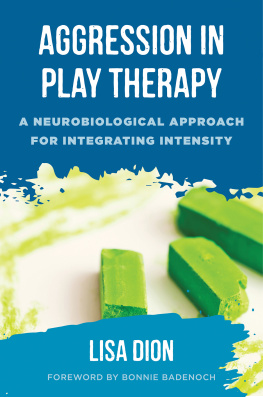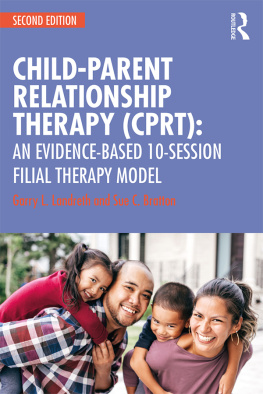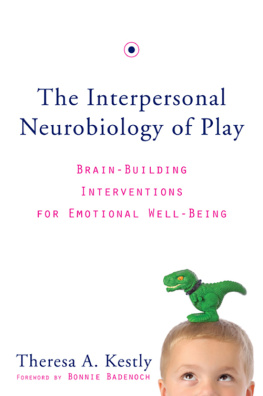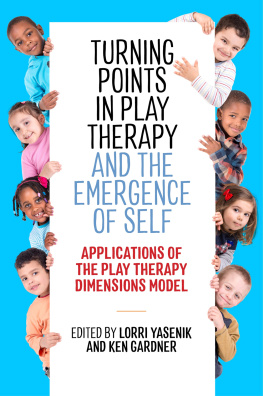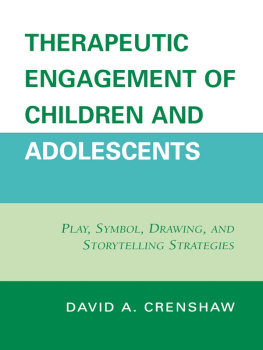Praise for The Therapeutic Powers of Play: 20 Core Agents of Change, Second Edition This first chapter of this book uses the concept of therapeutic factors to create a very logical framework/rationale for pulling together the theories and techniques one might integrate into a prescriptive approach to play therapy. This is incredibly useful as it allows therapists to tailor their work to the needs of their child clients in a logical and systematic way. The remaining chapters describe some of those therapeutic factors and play strategies from which the prescriptive play therapist might draw in creating individualized treatment approaches. Kevin O'Connor, PhD
Distinguished Professor
California School of Professional Psychology
at Alliant International University The hallmark of a good play therapist is a clear understanding of why play interventions are pertinent, how they work to foster therapeutic change, and how to select and facilitate play therapy processes in ways that are theoretically grounded and empathically attuned to their clients' needs. The Therapeutic Powers of Play provides breadth and depth in exploring the essential features of play operating within the therapy process. Each chapter describes a fundamental therapeutic power of play, empirical support for it, its role in bringing about change, and case material to illustrate. This volume provides a key avenue for play therapists to understand the inner workings of their craft, and thereby, to enhance their use of play therapy with a wide range of client challenges. Ris VanFleet, PhD, RPT-S, CDBC
Author of Child-Centered Play Therapy;
Filial Therapy: Play Therapy With Kids and Canines, and Others
President, Family Enhancement and Play Therapy Center
Past Chair of the Board, the Association for Play Therapy This book is printed on acid-free paper.  Copyright 2014 by John Wiley & Sons, Inc. All rights reserved. Published by John Wiley & Sons, Inc., Hoboken, New Jersey. Published simultaneously in Canada. No part of this publication may be reproduced, stored in a retrieval system, or transmitted in any form or by any means, electronic, mechanical, photocopying, recording, scanning, or otherwise, except as permitted under Section 107 or 108 of the 1976 United States Copyright Act, without either the prior written permission of the Publisher, or authorization through payment of the appropriate per-copy fee to the Copyright Clearance Center, Inc., 222 Rosewood Drive, Danvers, MA 01923, (978) 750-8400, fax (978) 646-8600, or on the web at www.copyright.com . Requests to the Publisher for permission should be addressed to the Permissions Department, John Wiley & Sons, Inc., 111 River Street, Hoboken, NJ 07030, (201) 748-6011, fax (201) 748-6008. Limit of Liability/Disclaimer of Warranty: While the publisher and author have used their best efforts in preparing this book, they make no representations or warranties with respect to the accuracy or completeness of the contents of this book and specifically disclaim any implied warranties of merchantability or fitness for a particular purpose. No warranty may be created or extended by sales representatives or written sales materials. The advice and strategies contained herein may not be suitable for your situation. You should consult with a professional where appropriate. Neither the publisher nor author shall be liable for any loss of profit or any other commercial damages, including but not limited to special, incidental, consequential, or other damages. This publication is designed to provide accurate and authoritative information in regard to the subject matter covered. It is sold with the understanding that the publisher is not engaged in rendering professional services. If legal, accounting, medical, psychological, or any other expert assistance is required, the services of a competent professional person should be sought. Designations used by companies to distinguish their products are often claimed as trademarks. In all instances where John Wiley & Sons, Inc. is aware of a claim, the product names appear in initial capital or all capital letters. Readers, however, should contact the appropriate companies for more complete information regarding trademarks and registration. For general information on our other products and services, please contact our Customer Care Department within the United States at (800) 762-2974, outside the United States at (317) 572-3993 or fax (317) 572-4002. Wiley publishes in a variety of print and electronic formats and by print-on-demand. Some material included with standard print versions of this book may not be included in e-books or in print-on-demand. If this book refers to media such as a CD or DVD that is not included in the version you purchased, you may download this material at http://booksupport.wiley.com . For more information about Wiley products, visit www.wiley.com . Library of Congress Cataloging-in-Publication Data: Schaefer, Charles E. The therapeutic powers of play : 20 core agents of change / Charles E. Schaefer, Athena A. Drewes. Second edition. pages cm Includes bibliographical references and index. ISBN 978-1-118-33687-8 (pbk.) ISBN 978-1-118-41658-7 (ebk.) ISBN 978-1-118-66211-3 (ebk.) ISBN 978-1-118-422020-1 (ebk.) 1. Play therapy. 2. Play therapyMethodology. I. Drewes, Athena A., 1948- II. Title. RJ505.P6S28 2014 618.92891653dc23 2013007485 This book is dedicated to a clearer, more understandable, and
more effective application of the therapeutic powers of
play by everyone. Preface Numerous reviews of play therapy outcome research have shown that play therapy is effective, with effect sizes ranging from medium to large (Bratton, Ray, Rhine, & Jones, 2005). The question remains, however, why and how does play therapy work? It is necessary to study the mechanism of change underlying play therapy to understand the specific forces that cause therapeutic improvement in a client. The goal of The Therapeutic Powers of Play: 20 Core Agents of Change , Second Edition is to provide the reader with a comprehensive understanding of the active ingredients in play that produce therapeutic change. The basic purpose of psychotherapy is to bring about change for the client. Thus, the identification of the change agents in play is of central importance to child and adolescent practitioners. We believe these therapeutic powers of play constitute play therapy's innermost core, its essence, its heart and soul! Many leaders in the field of psychotherapy, including Alan Kazdin (2003) and Irving Yalom (1985), have proposed that the study of change agents is the best way to improve clinical practice. Such study, they maintain, fosters a more targeted and efficient treatment delivery. Clearly, a greater understanding of the active forces of change in child and play therapy will not only broaden practitioners' repertoire of treatment strategies but aid their ability to tailor them to meet the needs of individual clients. Schaefer (1993) was the first to present a list of the major therapeutic powers of play, including self-expression, relationship enhancement, abreaction, and attachment formation. This second edition of The Therapeutic Powers of Play will further clarify and deepen our knowledge of the core healing powers of play () in light of accumulating clinical experience and research findings. Major Therapeutic Powers of Play. Introduction I. Facilitates Communication |
| 

